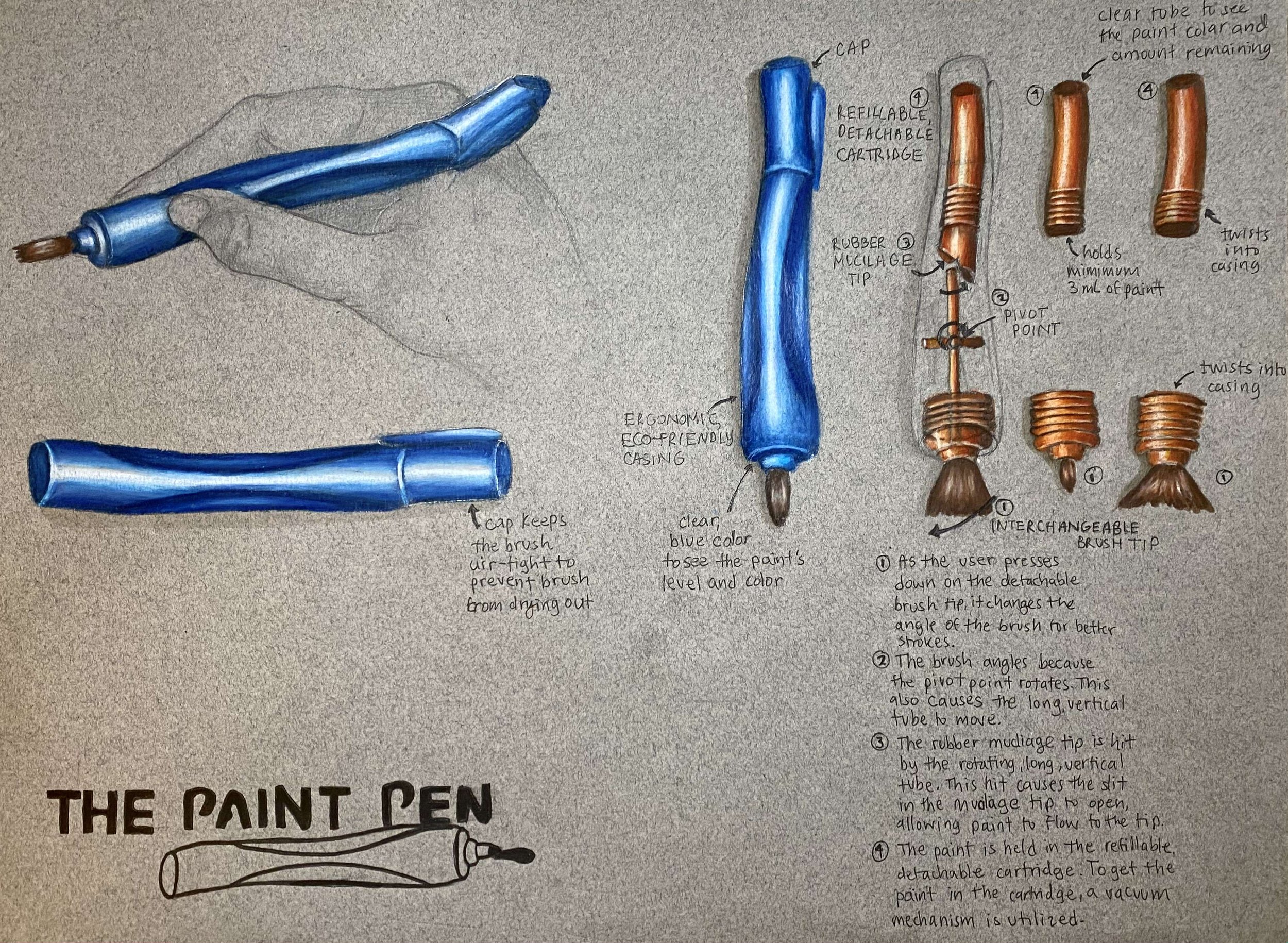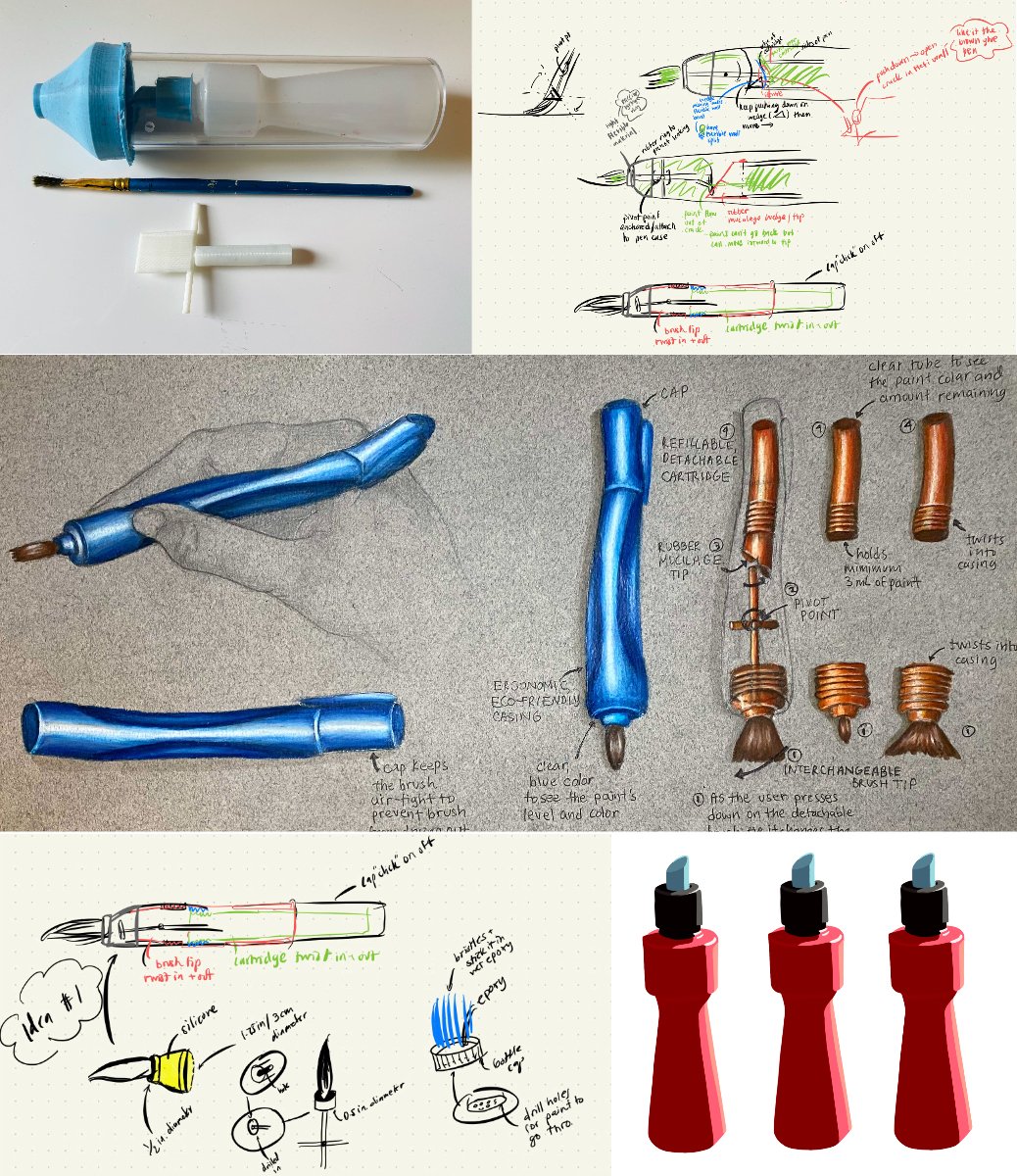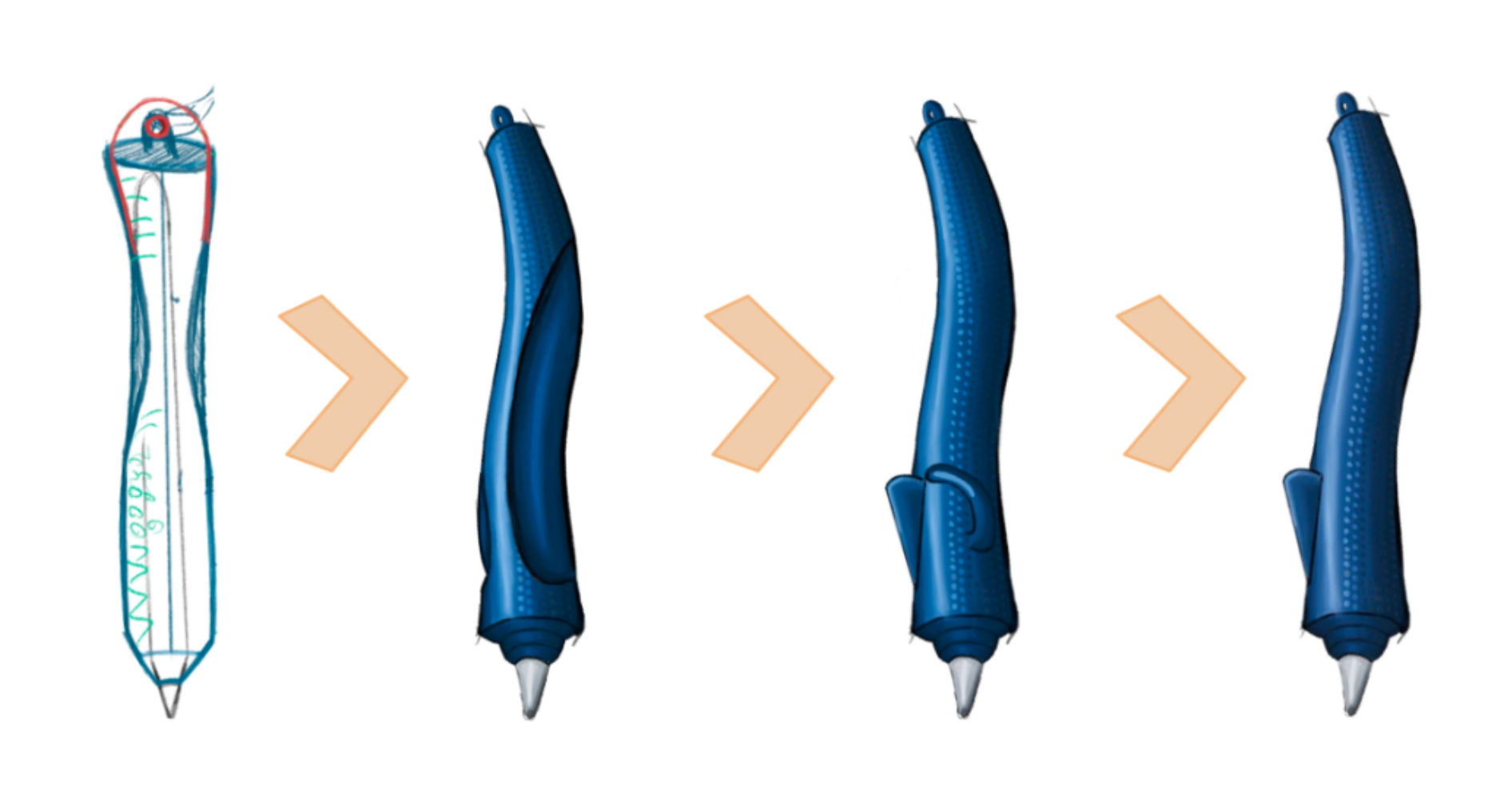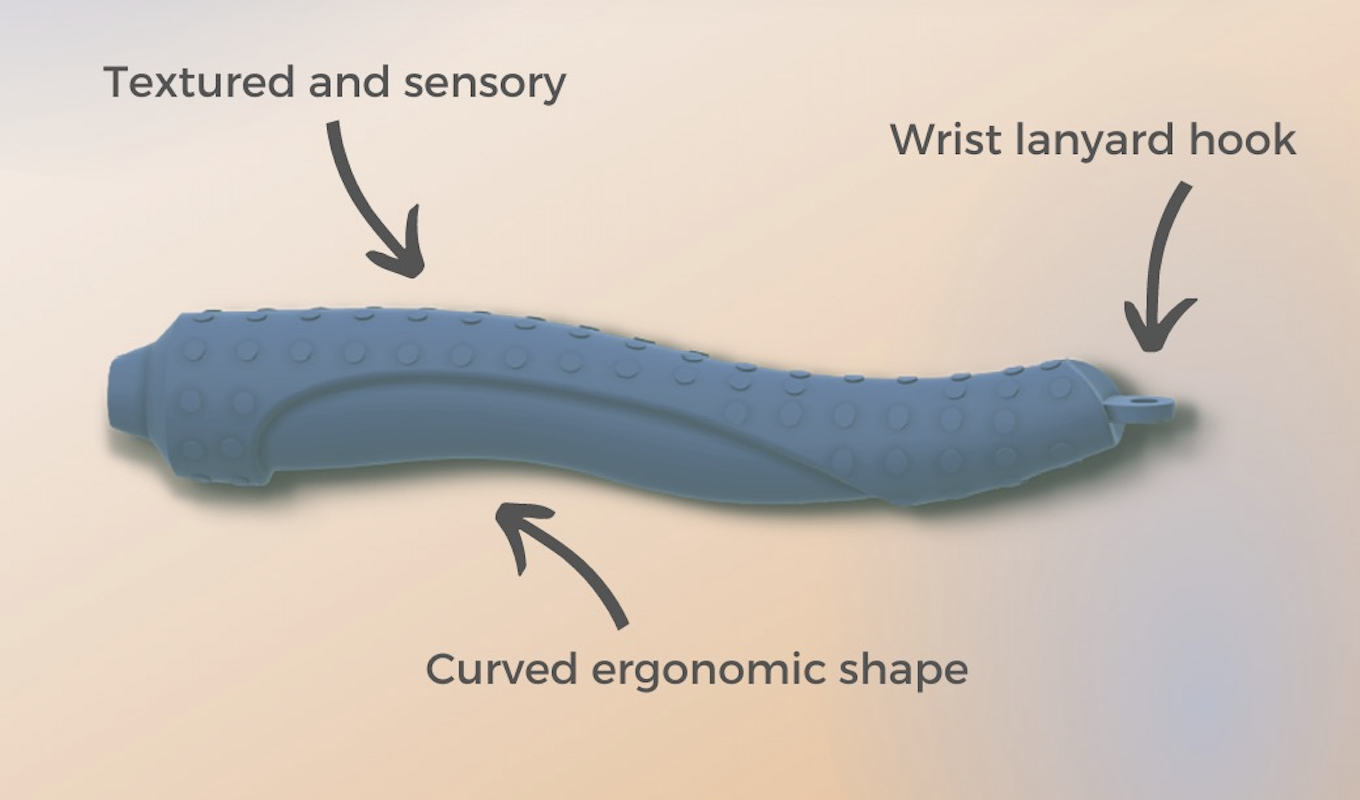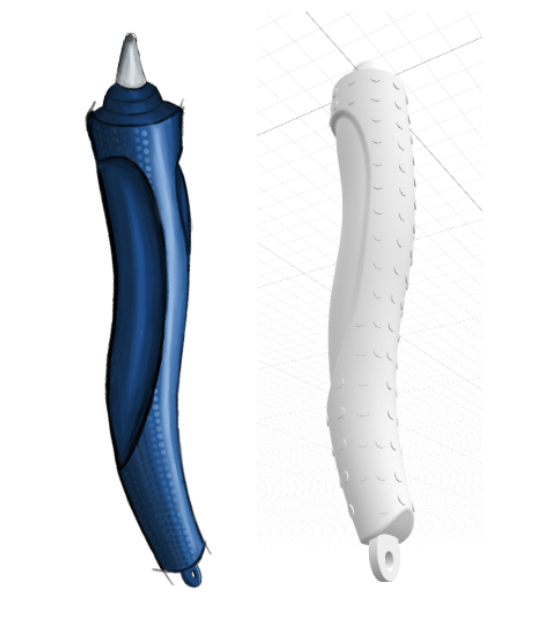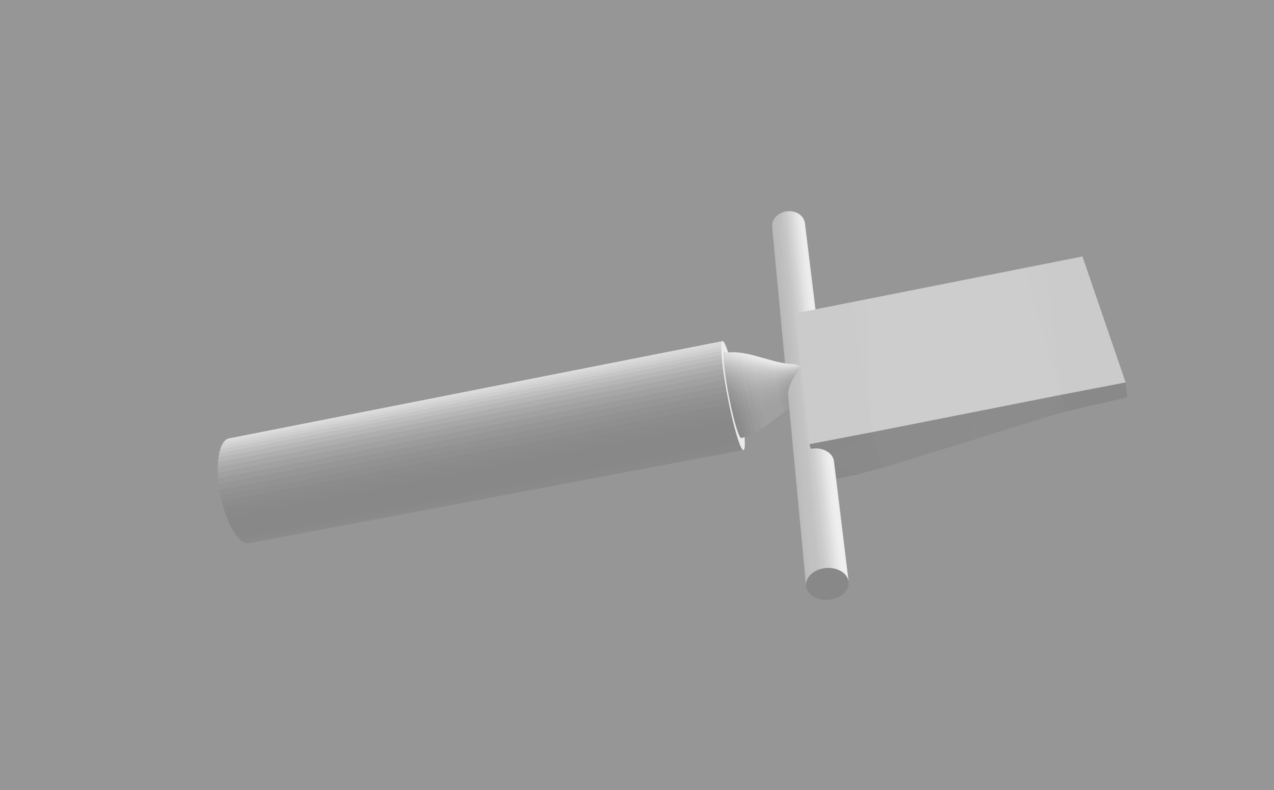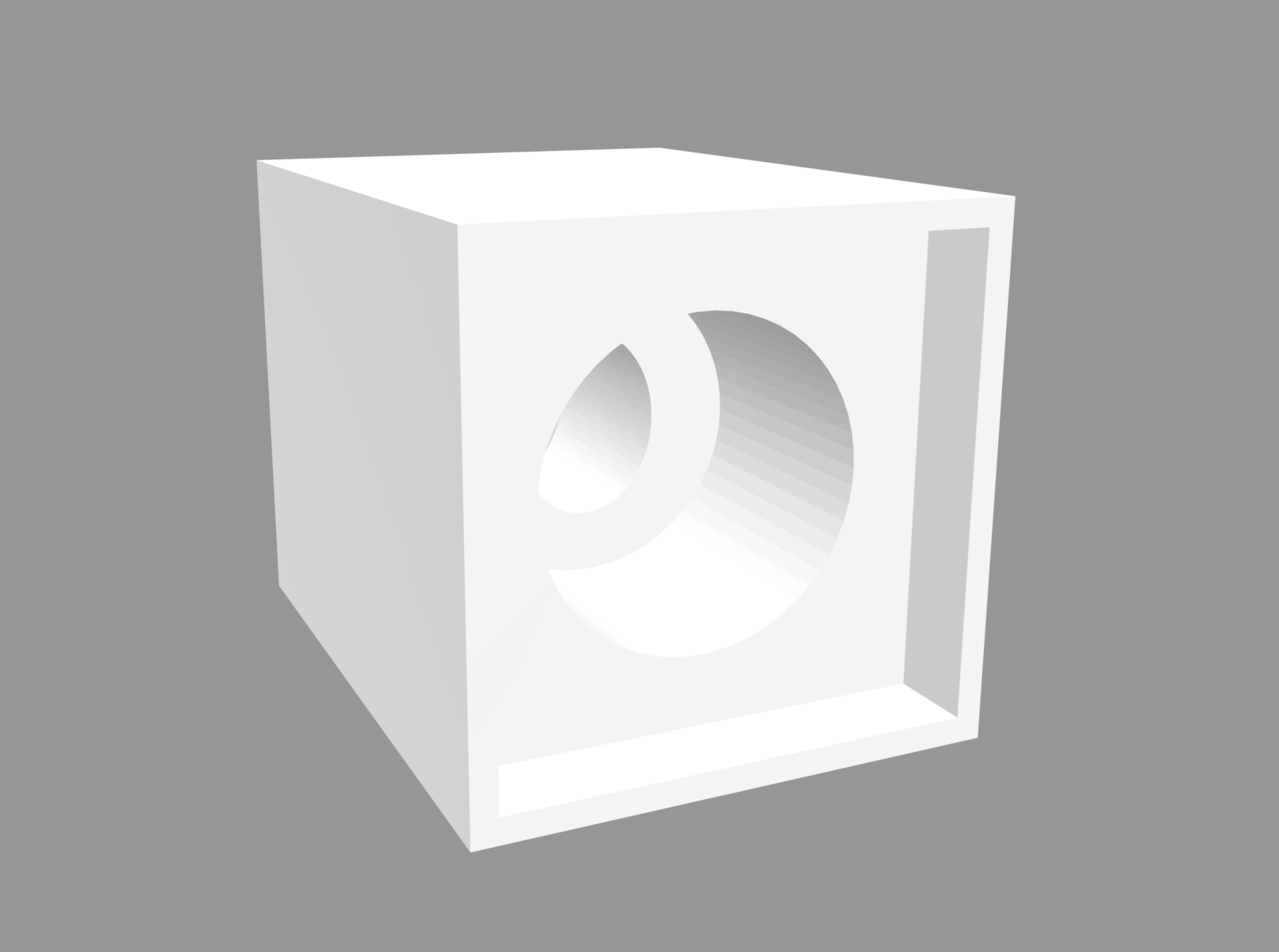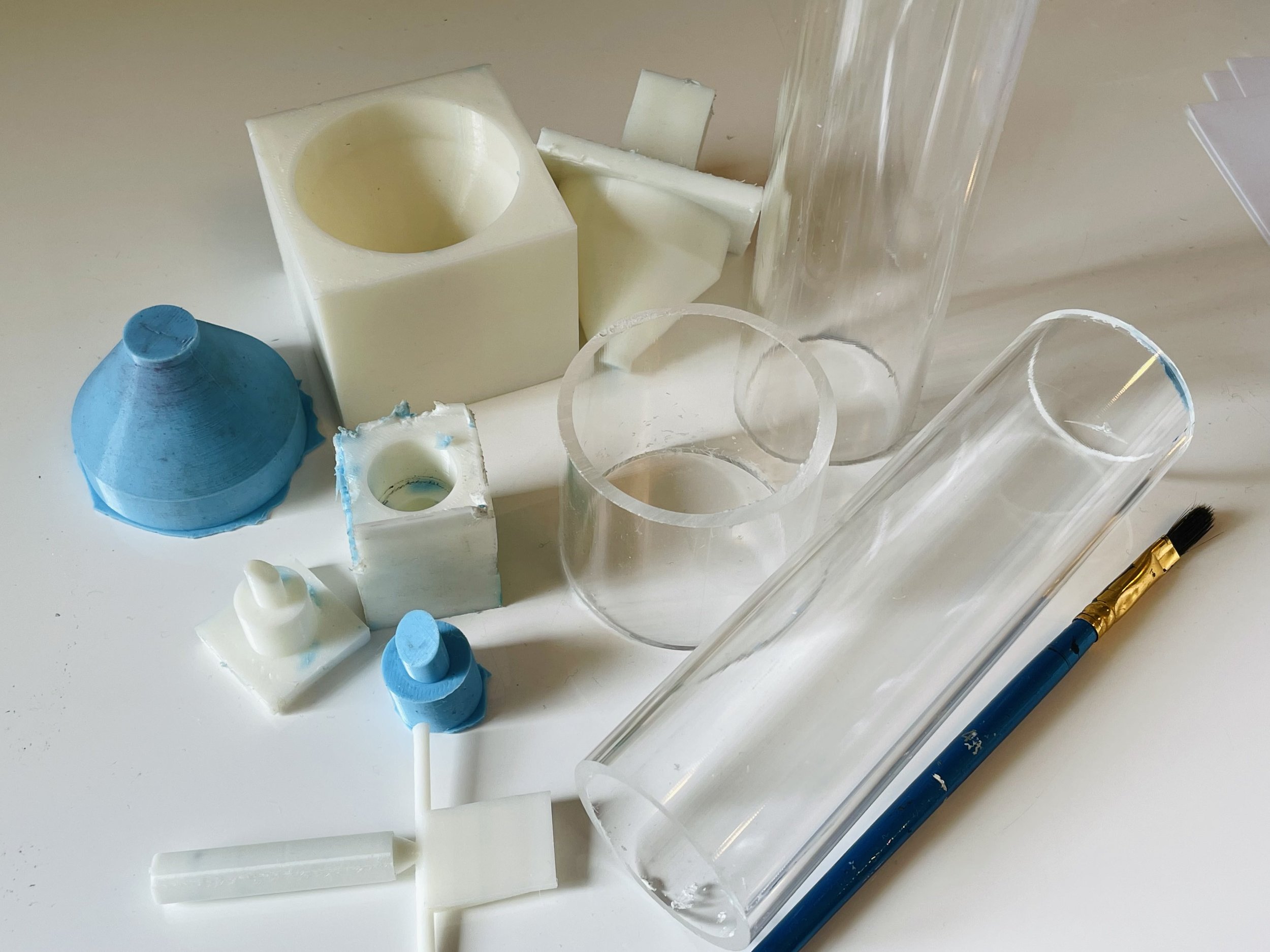PAINT PEN
An ergonomic paint pen that helps senior citizens with arthritis to creatively express themselves through writing and art
Tools: Onshape, Rapid Prototyping, 3D Printing, Silicone Molding, Procreate, Adobe Photoshop
HUMAN CENTERED DESIGN PROCESS
-
PROBLEM & RESEARCH
While teaching an art class at a local senior center, I noticed many of the participants struggling to hold paintbrushes, due to chronic hand pain. One resident, Eleanor, had severe arthritis in her fingers, and she wasn’t able to draw a straight line without me guiding her hand. What was meant to be a relaxing art therapy class for her became a source of frustration.
After speaking with several residents at the senior center, I discovered that many found traditional pencils and paintbrushes uncomfortable to use due to their thin shape. They explained that these tools were difficult to grip, especially for those with arthritis or other motor skill limitations. Several residents expressed a desire for an alternative tool that would be easier to hold, allowing them to engage in creative activities without discomfort.
-
CONCEPT
Curious to explore potential solutions, after participating in the Stanford Product Design summer program, I began designing an ergonomic device called The Paint Pen that would allow seniors to paint without pain. This product provides a more comfortable avenue of expression and allows all people of all ages and abilities to pursue creative expression. I worked and researched with Dr. Youssef Ismail under Schmahl Science Workshops to continue this project.
-
PROCESS & PROTOTYPING
My quest to understand user experience guided me through several rounds of user feedback, materials research and testing, and prototypes. The iterative design process was arduous, but each new prototype took me one step closer to a meaningful product. I researched and learned how to apply scientific principles, including fluid dynamics, chemical reactions, and the physiology of human movement, to ensure the pen’s functionality. I also learned to ask questions not just about utility, but also about human emotion: How will the pen connect with users? What reaction will it evoke?
-
USER TESTING
With each prototype I created, I tested it with residents at the local senior center where I volunteer. I also tested the Paint Pen with Dr. Lin at the Weill Cornell Medical Center in New York City.
Each person used the product without prior instruction, allowing me to observe their natural interactions with it. After each round of testing, I gathered feedback from the users and implemented it in the next iteration. I repeated this process until I developed a pen that met their needs, improving both comfort and usability. This iterative approach not only refined the design but also deepened my understanding of how to design for people with limited motor skills.


